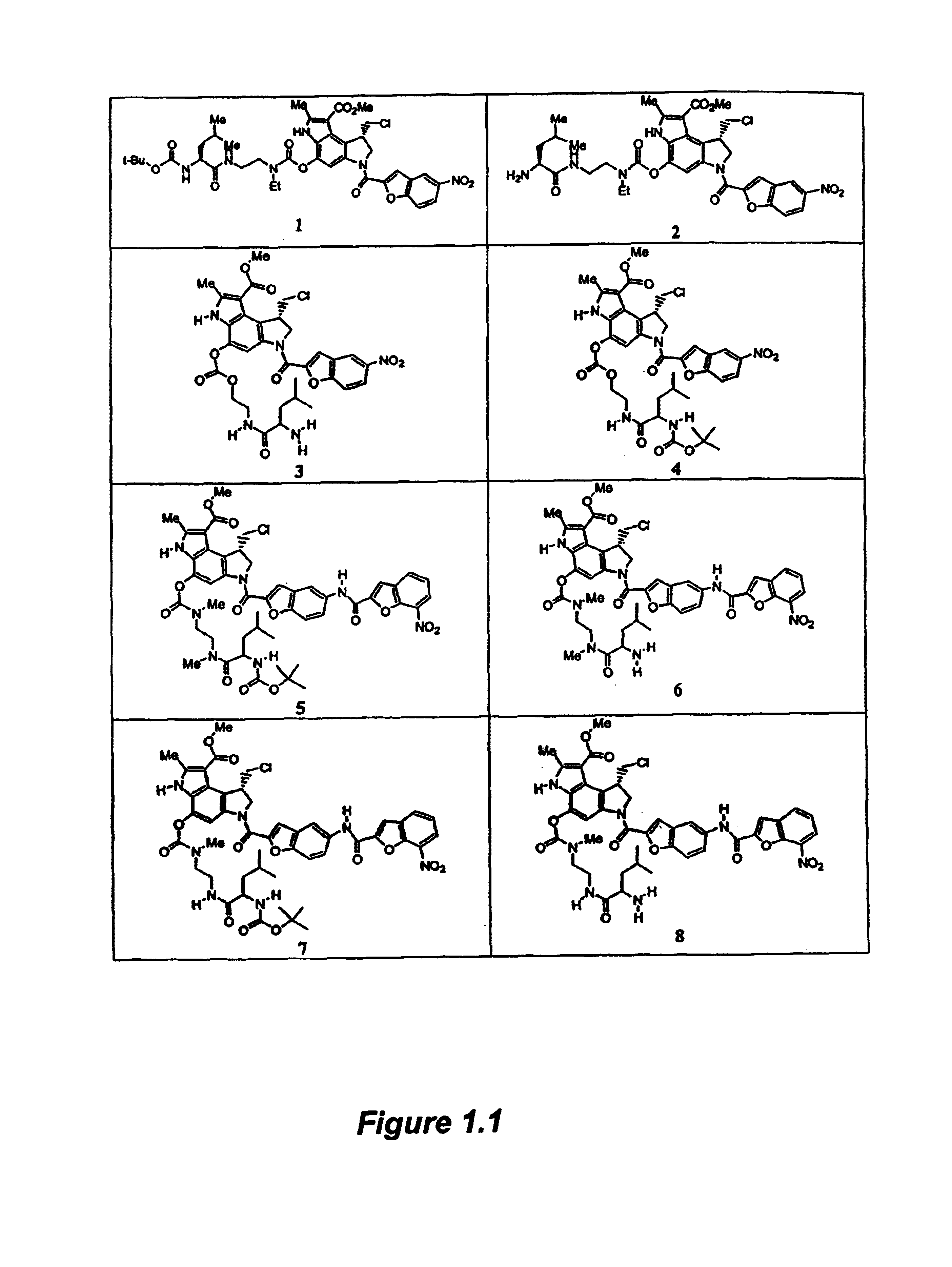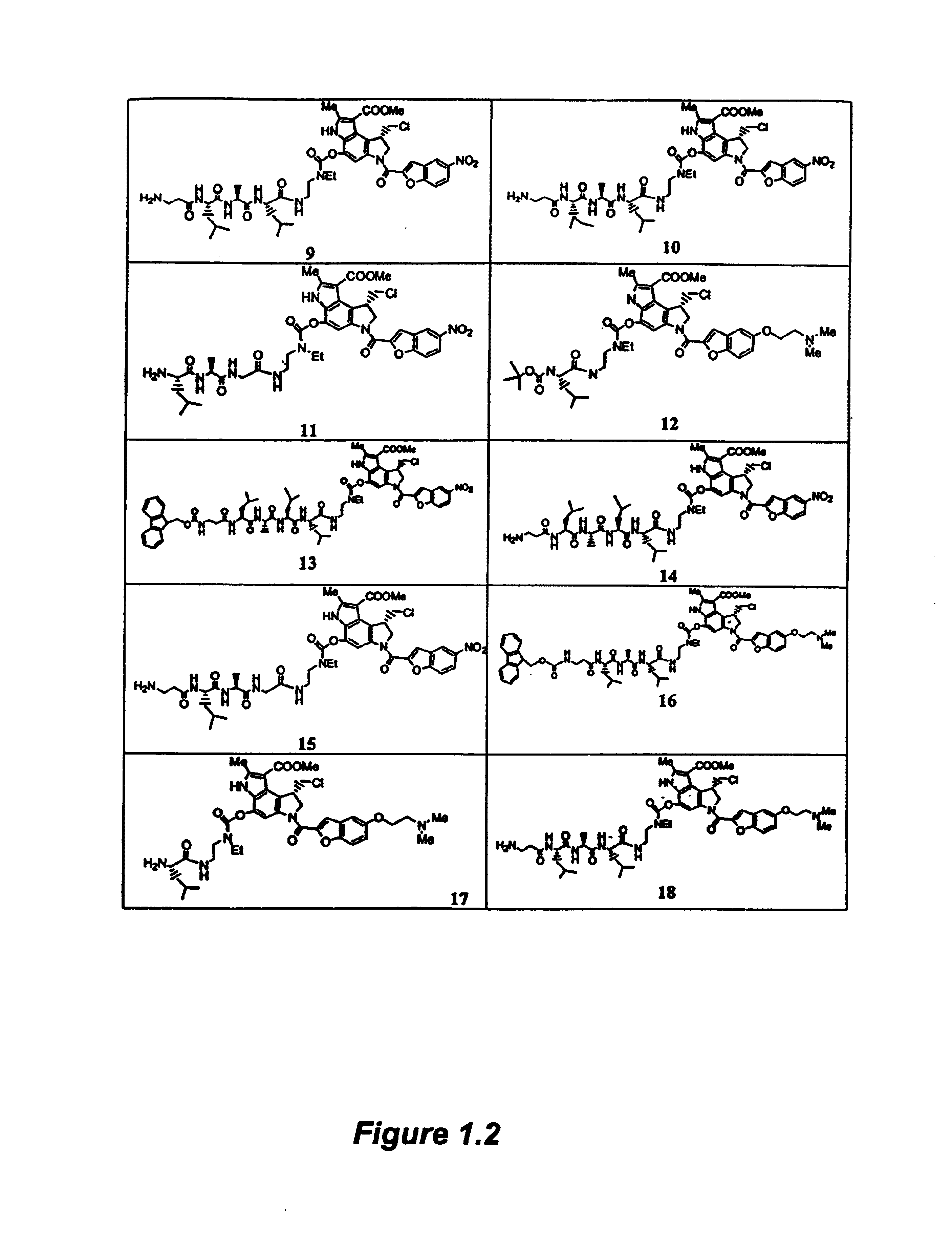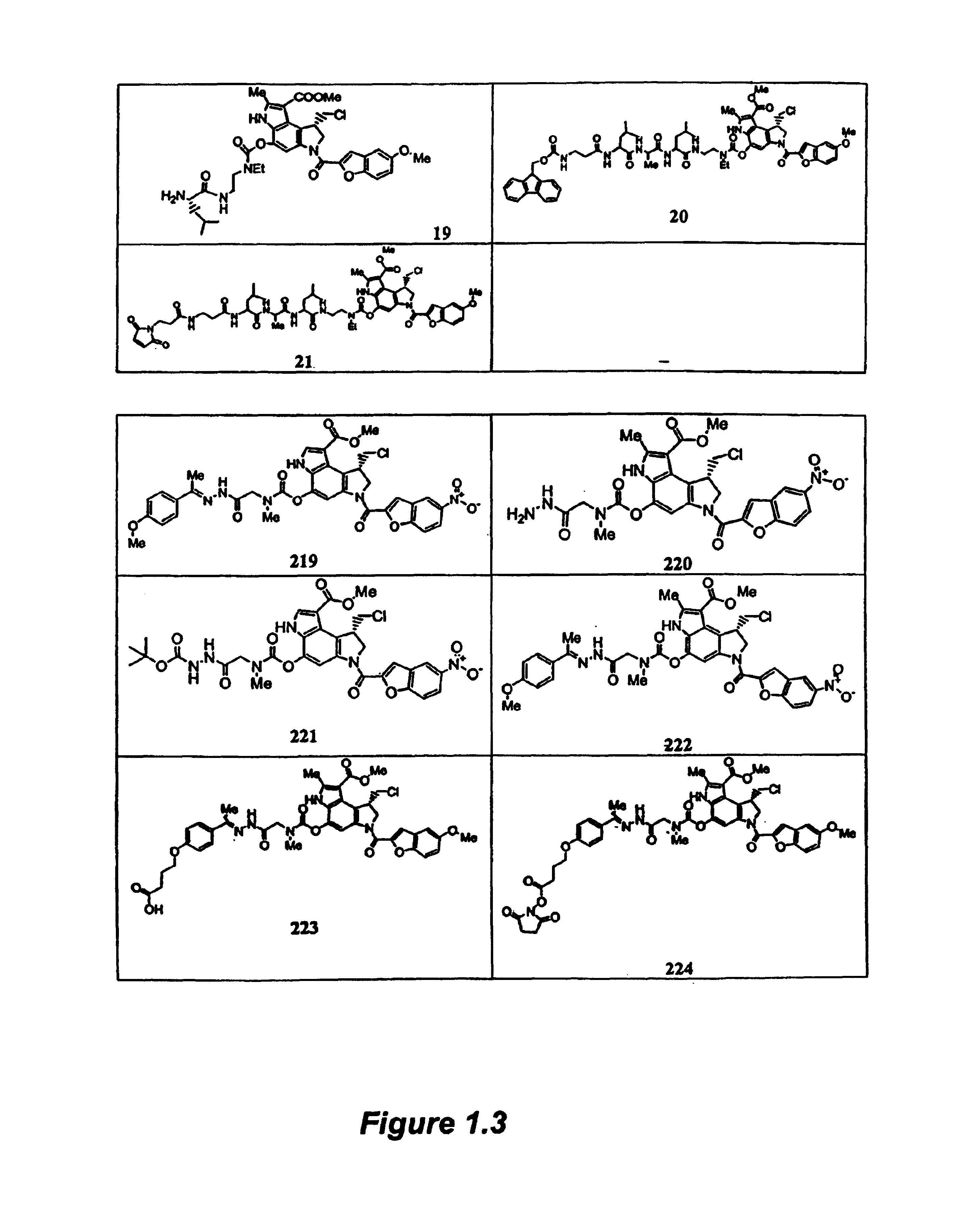Disulfide prodrugs and linkers and stabilizers useful therefor
a technology of disulfide prodrugs and stabilizers, which is applied in the direction of group 5/15 element organic compounds, peptides, and drug compositions, etc. it can solve the problems of less than optimal plasma stability, limiting the application of drugs, and often exhibiting acute toxicity in vivo, so as to improve the stability of agents or markers, limit clearance and metabolism of therapeutic agents, and improve the effect of agent or marker transpor
- Summary
- Abstract
- Description
- Claims
- Application Information
AI Technical Summary
Benefits of technology
Problems solved by technology
Method used
Image
Examples
examples 1
1.1 Material and Methods
[0263]In the examples below, unless otherwise stated, temperatures are given in degrees Celsius (° C.); operations were carried out at room or ambient temperature (typically a range of from about 18-25° C.; evaporation of solvent was carried out using a rotary evaporator under reduced pressure (typically, 4.5-30 mmHg) with a bath temperature of up to 60° C.; the course of reactions was typically followed by TLC and reaction times are provided for illustration only; melting points are uncorrected; products exhibited satisfactory 1H-NMR and / or microanalytical data; yields are provided for illustration only; and the following conventional abbreviations are also used: mp (melting point), L (liter(s)), mL (milliliters), mmol (millimoles), g (grams), mg (milligrams), min (minutes), LC-MS (liquid chromatography-mass spectrometry) and h (hours).
[0264]1H-NMR spectra were measured on a Varian Mercury 300 MHz spectrometer and were consistent with the assigned structures...
example 2
[0333]2.1 Synthesis Methodology
[0334]2.1a Synthesis of Compound 1
[0335]The compounds of Formula I are readily prepared by reacting the appropriate spirocyclopropylcyclohexadienly analog (Compounds B) with the activated heterocyclic compounds A using sodium hydride in N,B-dimethylformamide (DMF) or tetrahydrofuran (THF). The resulting compound 28 is then converted to compound 29 by treatment with the appropriate halo-acid, such as hydrochloric acid. Coupling with compound 29 by in situ activation is used to produce compound 1, a compound of Formula I.
[0336]Other compounds of Formula I are prepared according to published procedures, which are modified to make additional analogs using procedures well known to those skilled in the art, such as reductions, oxidations, additions, aqueous extractions, evaporation, and purification.
[0337]2.1b Synthesis of Compound A
[0338]To a solution of 5-nitro-2-carboxylic acid (0.83 g, 4.0 mmol) in N,N-dimethylformamide (60 mL) at 0° C. was added EDC (1...
example 3
[0357]3.1 Synthesis Methodology
[0358]3.1a Synthesis of Compound 239
[0359]The compounds of Formula I are readily prepared by reacting the appropriate spirocyclopropylcyclohexadienly analog (Compounds B) with the activated heterocyclic compounds A using sodium hydride in N,B-dimethylformamide (DMF) or tetrahydrofuran (THF). The resulting compound 28 is then converted to compound 29 by treatment with the appropriate halo-acid, such as hydrochloric acid. Compound 29 activated as the 4-nitrophenylester and coupled with compound C to give compound 239, a compound of Formula I.
[0360]Other compounds of Formula I are prepared according to published procedures, which are modified to make additional analogs using procedures well known to those skilled in the art, such as reductions, oxidations, additions, aqueous extractions, evaporation, and purification.
3.1b Synthesis of Compound A
[0361]To a solution of 5-nitro-2-carboxylic acid (0.83 g, 4.0 mmol) in N,N-dimethylformamide (60 mL) at 0° C. w...
PUM
 Login to View More
Login to View More Abstract
Description
Claims
Application Information
 Login to View More
Login to View More - R&D
- Intellectual Property
- Life Sciences
- Materials
- Tech Scout
- Unparalleled Data Quality
- Higher Quality Content
- 60% Fewer Hallucinations
Browse by: Latest US Patents, China's latest patents, Technical Efficacy Thesaurus, Application Domain, Technology Topic, Popular Technical Reports.
© 2025 PatSnap. All rights reserved.Legal|Privacy policy|Modern Slavery Act Transparency Statement|Sitemap|About US| Contact US: help@patsnap.com



